A Decade of GoAmazon
Published: 18 January 2024
Ten years later, campaign data gathered in Brazil by ARM and international collaborators have proved highly influential across atmospheric science
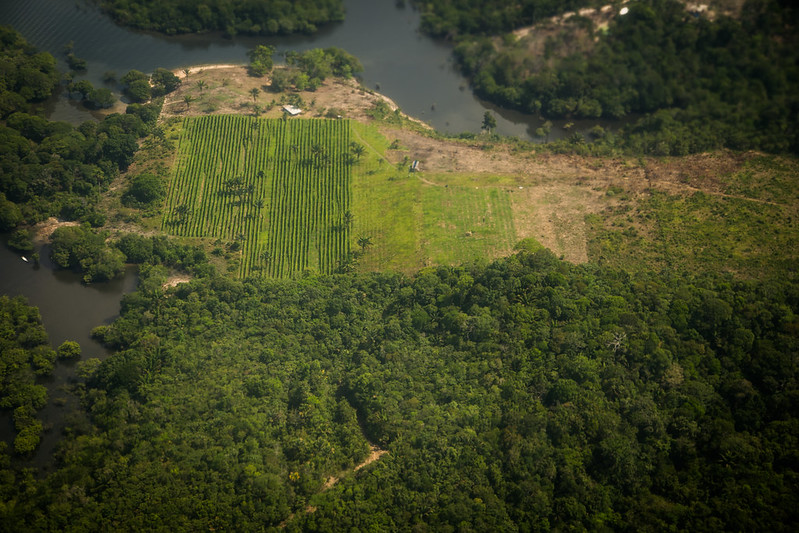
Looking out over the Amazon rainforest can seem like viewing a vast sea of trees. Its size, areas of relative isolation, and biodiversity make it a unique environment and natural laboratory. It is the closest that modern observers of the atmosphere can get to measuring preindustrial conditions over land.
For researchers trying to understand how human activities have affected the atmosphere, the Amazon’s relatively unpolluted air can provide critical baseline data. Centuries of industrialization have created a human-influenced background across most of the world. But areas of the Amazon remain sufficiently isolated from polluting activities to serve as effective proxies for preindustrial conditions.
However, the Amazon is not totally isolated. More than just forest, it contains numerous human settlements, such as the city of Manaus. With a population of just over 2 million people, Manaus is the largest city in the Amazon region. It acts as the sole source of human-driven emissions for a swath of the Amazon, generating a pollution plume that can be monitored.
In January 2014, the Atmospheric Radiation Measurement (ARM) user facility and international collaborators began the two-year Green Ocean Amazon (GoAmazon2014/15) field campaign, gathering data in the Amazon near Manaus. The location, a near-pristine environment with a single clear source of human influence, was an ideal natural laboratory.
Data from GoAmazon have become incredibly influential over the past decade. Since 2015, GoAmazon data have informed more than 160 journal articles, the most of any ARM campaign so far. That number keeps increasing as scientists find new insights from GoAmazon data sets, including those collected and made freely available by ARM.
Collaborative Data Collection
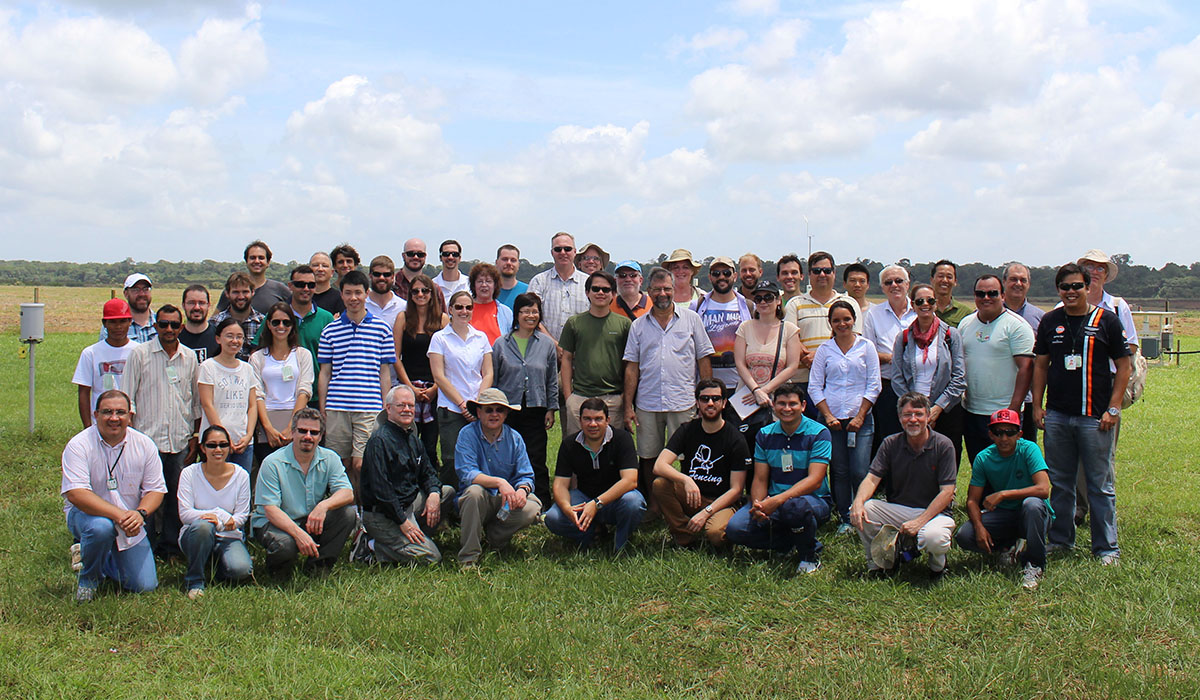
The GoAmazon team, led by Harvard University professor Scot Martin, continuously collected data from nine instrumented land sites and towers set in the forest canopy.
ARM, a U.S. Department of Energy (DOE) Office of Science user facility, deployed a mobile observatory near Manacapuru, southwest and downwind of Manaus, for the full duration of the campaign. The instruments measured wind, rain, clouds, aerosols, precipitation, and solar and thermal energy.
During two monthlong periods in 2014, ARM’s Gulfstream-159 (G‑1) research aircraft zigzagged through the sky to collect data on near-pristine and polluted air.
The wide range of data collected was enabled by multi-continental partnerships. The campaign included the use of German aircraft resources and Brazilian radar and aerosol instruments.
About 20 institutions contributed instruments to the effort, allowing the campaign to generate rich and highly validated data.
“The level of partnership we had across teams and countries was essential to GoAmazon’s success,” says campaign co-investigator Jiwen Fan, the deputy division director for environmental science at Argonne National Laboratory in Illinois. “The campaign was a massive undertaking, tackling complex scientific issues that could not have been accomplished by any single group. We needed the diversity of knowledge, experience, and measurement expertise that only a major international collaboration could provide.”
This diversity is represented in the scientific output from GoAmazon. Scientists have used the data to understand aerosol formation and behavior, track storm organization, and validate the accuracy of models. Importantly, the range of data allows researchers to probe complex atmospheric interactions.
“For example, there’s significant interplay between storms and aerosol,” says GoAmazon co-investigator Courtney Schumacher, an atmospheric sciences professor at Texas A&M University. “Storm characteristics can change the aerosols present, and the aerosols you measure can also tell you about the storm.”
Understanding Aerosols in a Natural Laboratory
“ARM’s GoAmazon field site was perfectly positioned to allow us to observe both natural aerosol processes and the influence of human emissions on aerosols.”
John Shilling, GoAmazon campaign co-investigator
While GoAmazon produced many types of data, many of the significant scientific conclusions from the campaign center on aerosols—their formation, behavior, and interactions with other atmospheric processes.
“We wanted to know how aerosol particles form in the Amazon,” says campaign co-investigator John Shilling, an atmospheric chemist at Pacific Northwest National Laboratory (PNNL) in Washington state. “ARM’s GoAmazon field site was perfectly positioned to allow us to observe both natural aerosol processes and the influence of human emissions on aerosols. We could study not only how the particles form, but also how they grow.”
Understanding the background of just the forest represented the first step. As most other isolated areas of the atmosphere are over oceans, GoAmazon revealed important differences in land-based aerosol formation. The data showed that trees play a central role in natural aerosol formation. They release small carbon-based, or organic, molecules into the air that can react with other naturally occurring chemicals.
Of these natural emissions, one stands above the rest. Scientists found in 2017 that isoprene, the most common non-methane organic gas released by plants, was present above the Amazon at levels up to three times higher than observed by other methods.
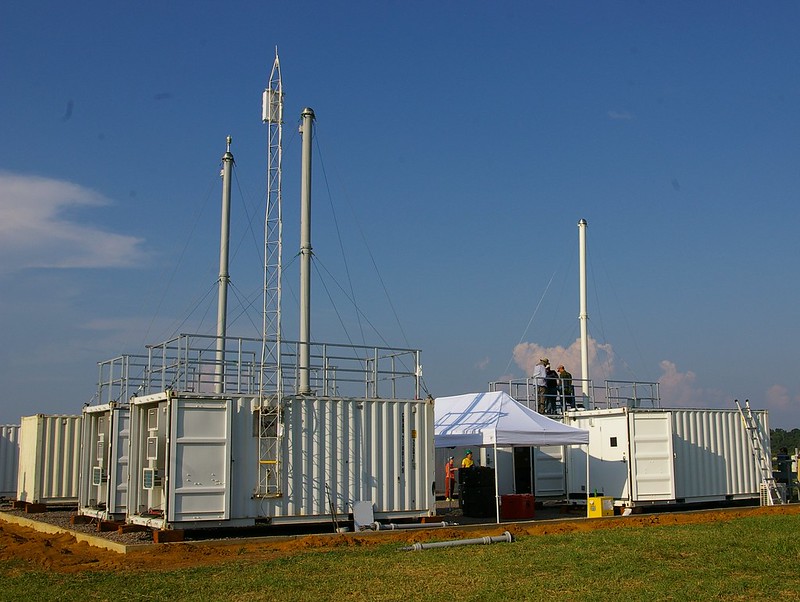
GoAmazon scientists directly sampled the atmosphere using instruments on the G-1 to determine isoprene concentrations. Most previous data were from satellites, which have relatively low resolution, or stationary instruments, which are limited to measuring a single geographic area. Because much of the world’s isoprene comes from the Amazon, accurately quantifying the emissions is essential to improving models of the atmospheric chemistry above forests.
Beyond understanding the natural processes of forests, the location of the GoAmazon study site directly in the path of pollution from Manaus provided an opportunity to examine how human activities affect natural atmospheric behavior.
Researchers found that the pollution plume interacts with the organic molecules released from the trees. The small background particles grow much larger than during periods when the plume is absent. This indicates that different chemistry is at play between the natural and human-caused aerosols.
“In most places, background levels of pollution prevent us from understanding what the preindustrial atmosphere may have been like,” says Shilling. “With the GoAmazon data, we could clearly see the effects of pollution on the aerosol processes.”
Modeling for Understanding
Some studies, including work funded by DOE’s Atmospheric System Research (ASR) program, have combined data analysis and modeling to produce insights unobtainable by either approach alone. Through these types of studies, scientists have identified how emissions from human activities influence aerosol formation and how the increased amount of aerosols affects clouds.
“Doing the modeling was initially quite challenging,” says ManishKumar Shrivastava, an earth scientist at PNNL. “The models had trouble representing an area with so little pollution. What we found is that while most of the carbon in the aerosols is naturally occurring, the pollution from Manaus significantly affects the chemistry in the atmosphere.”
Shrivastava and his team identified the emission of nitrogen oxides from human activities as a key player in the massive aerosol enhancements seen in GoAmazon data. The data showed an up to 400% increase in aerosol formation when the pollution plume from Manaus was present compared with when it was absent.
The massive aerosol increase occurs from interactions between the natural organic molecules and nitrogen oxides. The nitrogen oxides can react with the natural emissions, changing the chemical makeup of molecules in the atmosphere and affecting what types of further chemical reactions can occur.
This means there are dramatically more aerosol particles where the pollution plume blows. And all these particles do more than exist. They can affect the clouds.
“Results from GoAmazon fundamentally changed how we understand human influences on aerosol and climate.”
Jiwen Fan, GoAmazon campaign co-investigator
“Results from GoAmazon fundamentally changed how we understand human influences on aerosol and climate,” says Fan. “Previously, conventional thought was that ultrafine particles, like what we observed in GoAmazon, were too small to affect cloud formation. Our data and model results showed the opposite, opening the door to new science in aerosol-cloud interactions.”
A 2018 study led by Fan showed that these ultrafine aerosol particles can serve as seeds for the numerous water droplets inside storms. The presence of these extra droplets, caused by pollution, can enhance the conversion of water vapor into cloud liquid and intensify clouds. These findings highlight the potential influence of human-driven emissions on clouds.
The work has continued, with more recent research examining how these tiny aerosol particles grow large enough to seed clouds. The small particles that stem from human-caused emissions can then interact with the naturally occurring rainforest emissions. The organic compounds in the atmosphere then condense onto the small aerosol particles, making them larger.
Some of the larger particles reach the point where they can form seeds for clouds, existing in a much greater number than without human influence. The increase in cloud seeds affects how shallow clouds form. Having additional particles present leads to clouds made of more but smaller particles. These clouds scatter more light and are less likely to produce rain. This demonstrates a clear link between pollution and weather above the Amazon.
A Proving Ground for Early Career Scientists
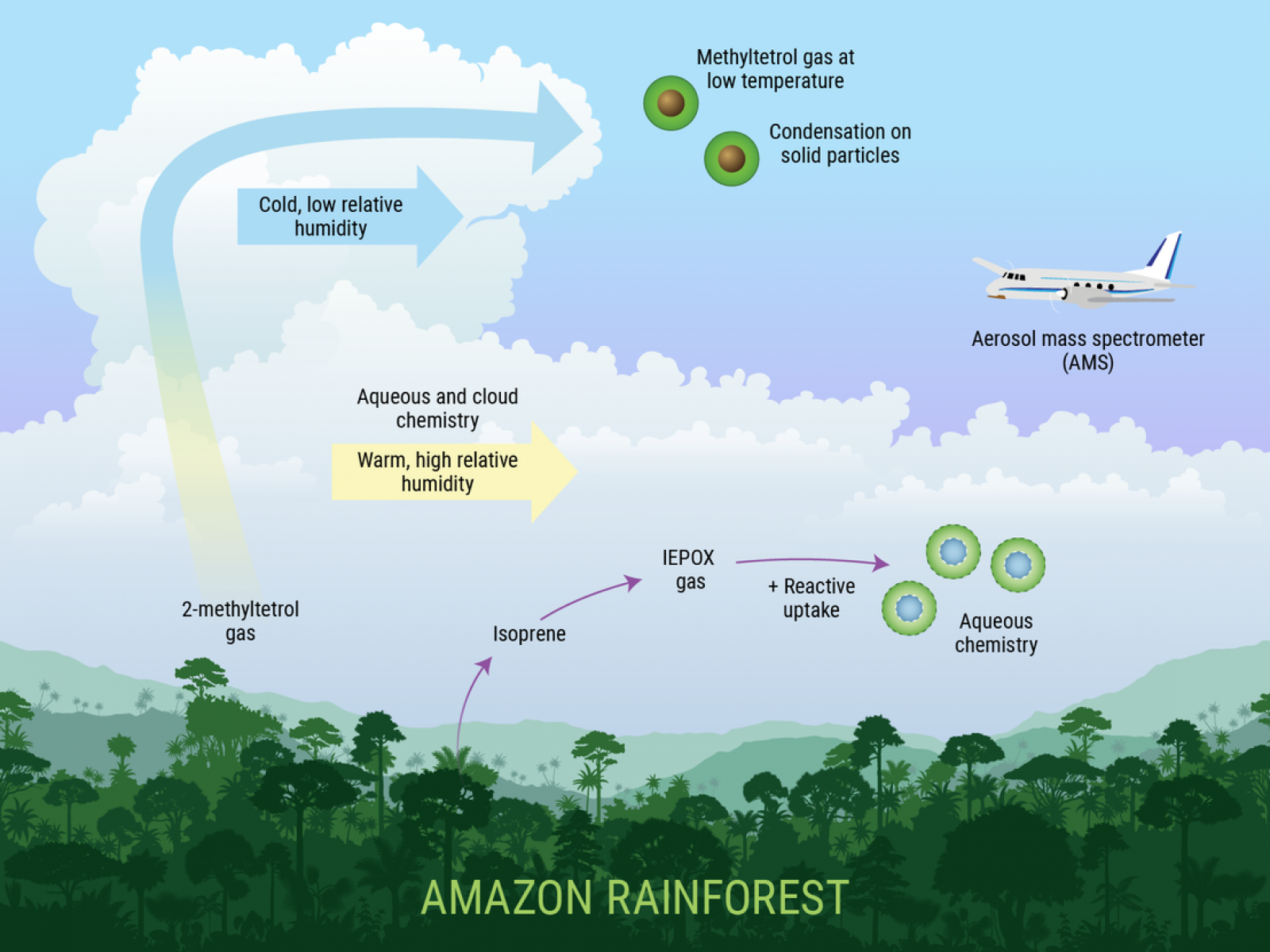
GoAmazon provided invaluable experience and insights for scientists, including those just starting their careers. Numerous postdoctoral researchers, graduate students, and early career scientists got to participate in the campaign’s two-year field phase.
Some scientists have used GoAmazon data to conduct innovative work early in their careers. In 2018, Shrivastava received a DOE Early Career Research Program award to develop better representations of how complex organic aerosol processes affect aerosol-cloud interactions in models. The unique and detailed data from GoAmazon have played a significant role in Shrivastava’s ongoing project.
“Advancing models is a fascinating challenge,” says Shrivastava. “You start with both a model and experimental data, which generally don’t match. The main question is why. That requires teasing out which processes the model isn’t representing properly.”
For example, Shrivastava led work that identified the role that the coupling of plant biochemistry to cloud convection plays in aerosol formation above the Amazon. Plant biochemistry is an important but overlooked source of emissions of organic gases that condense to form aerosol particles during their transport to high altitudes by clouds.
By better understanding the different processes at play above the Amazon, scientists can improve how regional models simulate the interactions between the Earth’s surface, clouds, and aerosols.
Looking to the Future
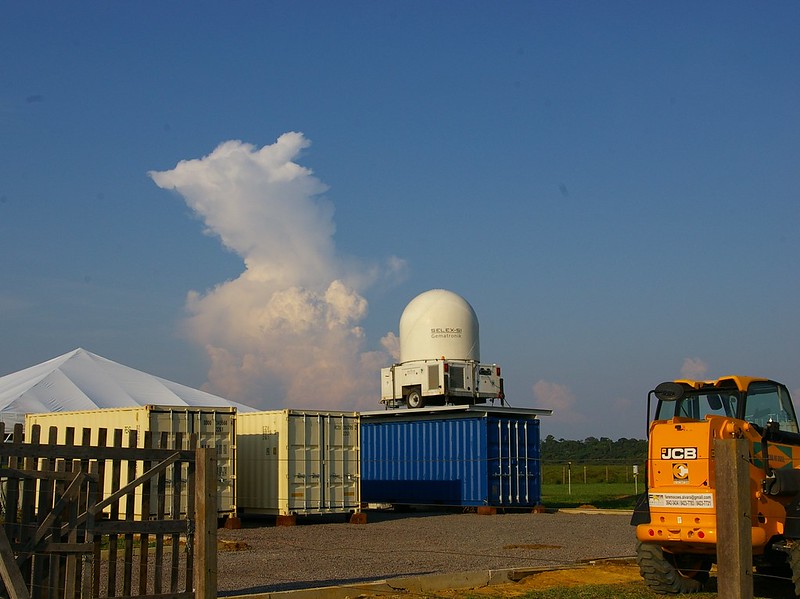
The influence of GoAmazon on both field campaigns and research has been substantial.
“GoAmazon highlighted the value of using aircraft with highly specialized instrumentation along with ground measurements,” says Shrivastava. “As a campaign that generated so much rich data, it’s also shown us what types of data are most impactful. That knowledge is incredibly useful when planning future campaigns.”
In 2021 and 2022, while working at PNNL, Fan was a co-investigator for ARM’s TRacking Aerosol Convection interactions ExpeRiment (TRACER) in the Houston, Texas, area.
“I can think of two aspects where we applied what we learned from GoAmazon to TRACER,” says Fan. “We intentionally collaborated with other agencies, in this case NASA and the National Science Foundation, and scientists from other countries, such as the United Kingdom and Germany, to collect different types of data. We were also inspired by GoAmazon in looking at interactions between aerosol and clouds by collecting data for key properties such as aerosol particle size and storm properties.”
This legacy will continue in future ARM deployments both globally and in the United States. Meanwhile, researchers are still finding new uses for GoAmazon’s rich data sets. For example, new work highlights how sky image-based data sets may play an increased role in solar forecasting and related research through deep learning.
Interested in GoAmazon data? Check out past data announcements, and go to the ARM Data Center.
In addition, scientists recently embedded a physics-informed deep neural network in a detailed regional model, speeding up predictions of complex aerosol formation chemistry processes over the Amazon.
“The length of the campaign allowed us to capture data across years and seasons,” says Schumacher. “The robustness and complexity of the data has been invaluable for model validation, especially for comparison with satellite data. It’s been fascinating to watch the uses of the data sets evolve over time to well beyond our original scope. GoAmazon is still impacting how we understand the climate.”
Keep up with the Atmospheric Observer
Updates on ARM news, events, and opportunities delivered to your inbox
ARM User Profile
ARM welcomes users from all institutions and nations. A free ARM user account is needed to access ARM data.


















